Customer service teams can stand to gain from AI phenomena like ChatGPT. However, your business’ approach to ChatGPT, as with all new technologies, must be calculated. There are those who still underestimate AI’s capabilities, who stand to lose by eschewing it entirely. There are those who overestimate AI’s capabilities, who stand to lose by rushing in prematurely.
Only 50% of companies say their teams are well-versed in AI.
Customer acquisition and retention are on the line since customer expectations will quickly outpace those slow on the uptake. And we know that missed customer opportunities are critical, especially during a recession.
In the first five days of its launch, ChatGPT reached 1 million users. It is widely understood that we are on the precipice of even faster evolving AI functionalities – and every business and leader should be questioning how they can seize this opportunity to their advantage. This is not about striking the iron while it is hot – more about keeping up with the curve.
Stick with us the whole way to discover use cases of ChatGPT for customer service, its limitations, and unique Chat GPT prompts for customer service leaders. You’ll also learn how to completely reinvigorate your CSAT responses using ChatGPT.

Before you wade in to experiment, look in the mirror to reflect on what problems you might want to solve. Here are some of the most common challenges for customer service teams:
- Meeting customers expectations
- Improving quality at scale
- Maintaining consistency across teams
- Keeping up with technologies.
Now, let’s talk about ChatGPT for customer service and whether it might help with these issues.
What is ChatGPT?
ChatGPT is a chatbot developed by OpenAI that uses a variant of the GPT (Generative Pre-training Transformer) language model to generate human-like responses. It is designed to engage in conversation with humans and answer their questions or requests.
For example, it coughed up the above definition of itself (how meta) during research. But language generators like ChatGPT don’t (yet) contain enough nuance to think of and describe their actions as meta.
The system is trained using machine learning techniques, using a large dataset of text from the internet. Ease of use is one of its pre-eminent advantages.
It was made public on November 30, 2022, and is currently in the research review phase for users to test it free of charge. The chatbot itself is free to try for individual users, hosted by OpenAI, but the company also sells access to the AI models to businesses for use.
AI for customer service is already multifaceted, but does this dawn a new era for how we speak to customers?
Can ChatGPT be used for customer service?
Definitely! ChatGPT can be used for customer service, especially when it comes to assisting with customer inquiries, providing information, troubleshooting issues, and offering general support.
Even though it won’t replace the need for human customer service agents entirely, it has multiple benefits:
Why is ChatGPT good for customer service?
- Availability
ChatGPT can be available to customers 24/7, which can be helpful for businesses that operate outside of normal business hours. - Speed
ChatGPT can respond to customer inquiries quickly, which can lead to faster resolution times and improved customer satisfaction. - Cost-effectiveness
Using ChatGPT for customer service can potentially save a company money by reducing the need for human customer service representatives. - Consistency
ChatGPT can provide consistent responses to customer inquiries, which can be helpful in ensuring that customers receive the same information no matter who they interact with.
You might be wondering how this is any different from existing chatbot services on the market. The above four benefits are all selling points for the chatbots that have become standard for answering basic customer inquiries.
ChatGPT for customer service is far more advanced than its chatbot predecessors.
Chatbots have always aimed to mimic human conversation as closely as possible through AI. They could answer frequently asked questions and provide set information about products and services. However, it could not engage in any more complex two-way dialogues. As you may have experienced, users had to be exact in their questioning to avoid confusing the bot. This can be frustrating for customers who have more complex customer queries.

The new GPT variant is much more proficient at simulating human language and is able to respond to more natural user input. It also has an extensive knowledge base and is able to recall previous conversation points and even call out a person for lying.
Businesses thus have a path to more natural conversations with customers or clients through ChatGPT.
Um, but there are limitations to using ChatGPT in customer service in this format
- Limited capabilities:
ChatGPT may not be able to handle more complex or nuanced customer inquiries and may require human intervention to resolve certain issues. - Lack of personalization:
ChatGPT may not be able to provide the same level of personalized responses as human customer service agents, which can lead to a less satisfactory experience for the customer. - Potential for errors:
As with any automated system, ChatGPT may make mistakes or provide incorrect information. This can lead to confusion or frustration for customers.
Let’s dissect these disadvantages.
Filling in knowledge gaps
ChatGPT is good at solving problems and skillfully navigates conversational discussions. Just like many humans. But where ChatGPT’s knowledge falls short, it does not have the awareness to admit this and instead fills in the gaps. Just like some people would during a discussion.
But a discussion, or conversation, is not quite what you would describe the interaction between a customer service agent and a customer. This is more transactional – the setting entails accurate information exchange.
Thus, if a query becomes too complex for ChatGPT, it will fall back on its powers of making conversation rather than its powers of knowledge. Customer service agents should never try to fill in gaps in their knowledge in the context of their job.
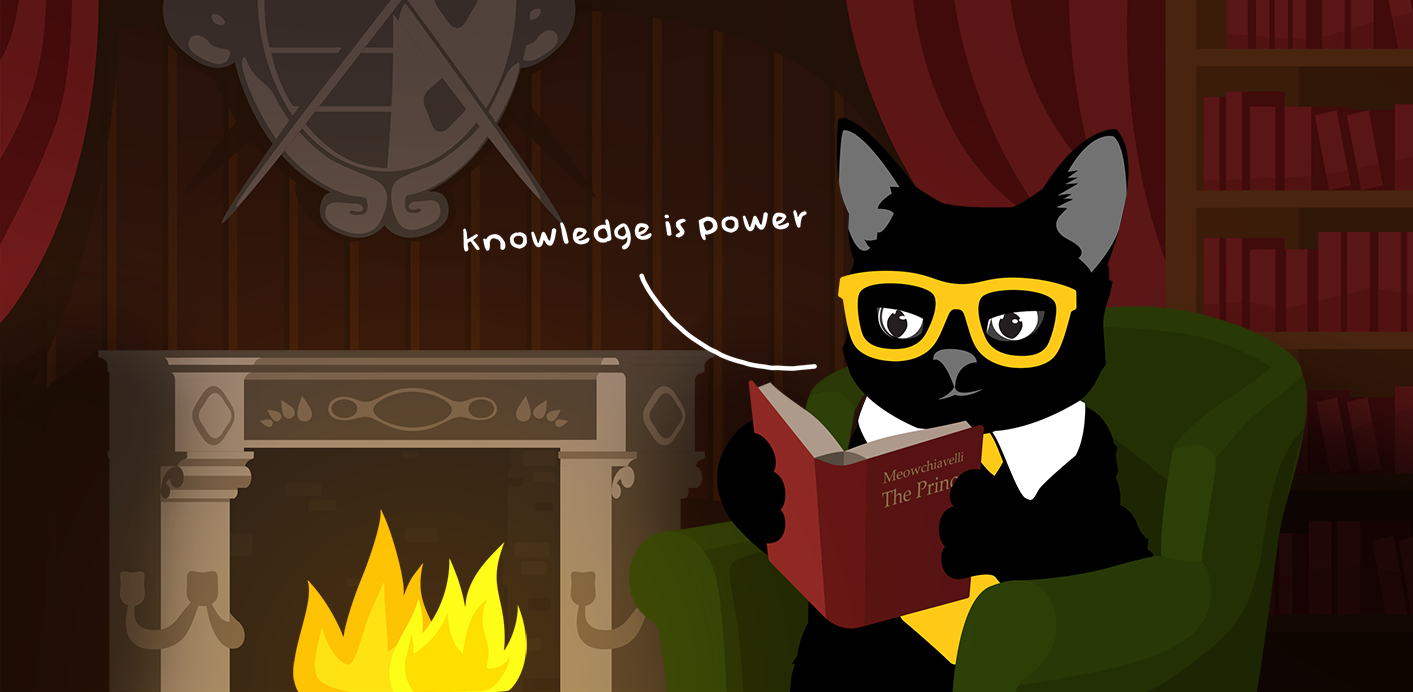
The need for deliberate, articulated prompts
There are several reasons why a customer may not want to tailor their line of inquiry (to get the best answer from ChatGPT, or any chatbot):
- The customer may be experiencing frustration or stress due to a problem or issue they are trying to resolve. They may not have the patience or inclination to carefully craft their questions in order to get the best answer.
- The customer may feel that the answers they need already exist and the customer service representative or ChatGPT can provide them – rather than having to spend time and effort trying to extract the information they need through careful questioning.
This is especially true if the customer is unable to assess the accuracy of the chatbot’s responses.
ChatGPT’s inability to provide personal information
There is also the issue of personalization, which is a priority, considering that 80% of consumers are more likely to buy from a company that provides a tailored customer experience. In the past, customer service automation has come at the expense of personalization. And although customer service chatbot advancements have come in leaps and bounds from first-generation bots, they cannot give customer-specific data.
If a customer wants to know account information, for example, ChatGPT for customer service falls short.
The issue of putting a customer in front of a ChatGPT-powered bot is that you are asking too much of a customer and not giving enough in return. If a customer wants to put in the effort to find the answer themselves, they will search your knowledge base, or Reddit, or YouTube. When they come to a chat, they want a direct answer and have likely already exhausted the more proactive, self-serve means of support. At this point, they desire a ‘real’ customer service agent.
7 customer service ChatGPT prompts
ChatGPTs strengths lie in its ability to mimic human conversation when you feed it prompts. People leap to question whether it can serve as a proxy for customer service agents and jump-frog its other uses for customer service.
Below are several more ‘behind-the-scenes’ ChatGPT prompts to help customer service leaders manage their customer support teams.
These more creative applications help you save time through training teams, bolstering proactive support, and unifying communications. All of these things will help with the aforementioned customer service challenges:
- Meeting customers expectations
- Improving quality at scale
- Maintaining consistency across teams
- Keeping up with technologies.
1. Prompt to provide examples for training soft skills
Please provide 10 example phrases customer service agents can use to display empathy
This gives agents go-to empathy statements and phrases, helping them work around different ways to convey the same sentiment.
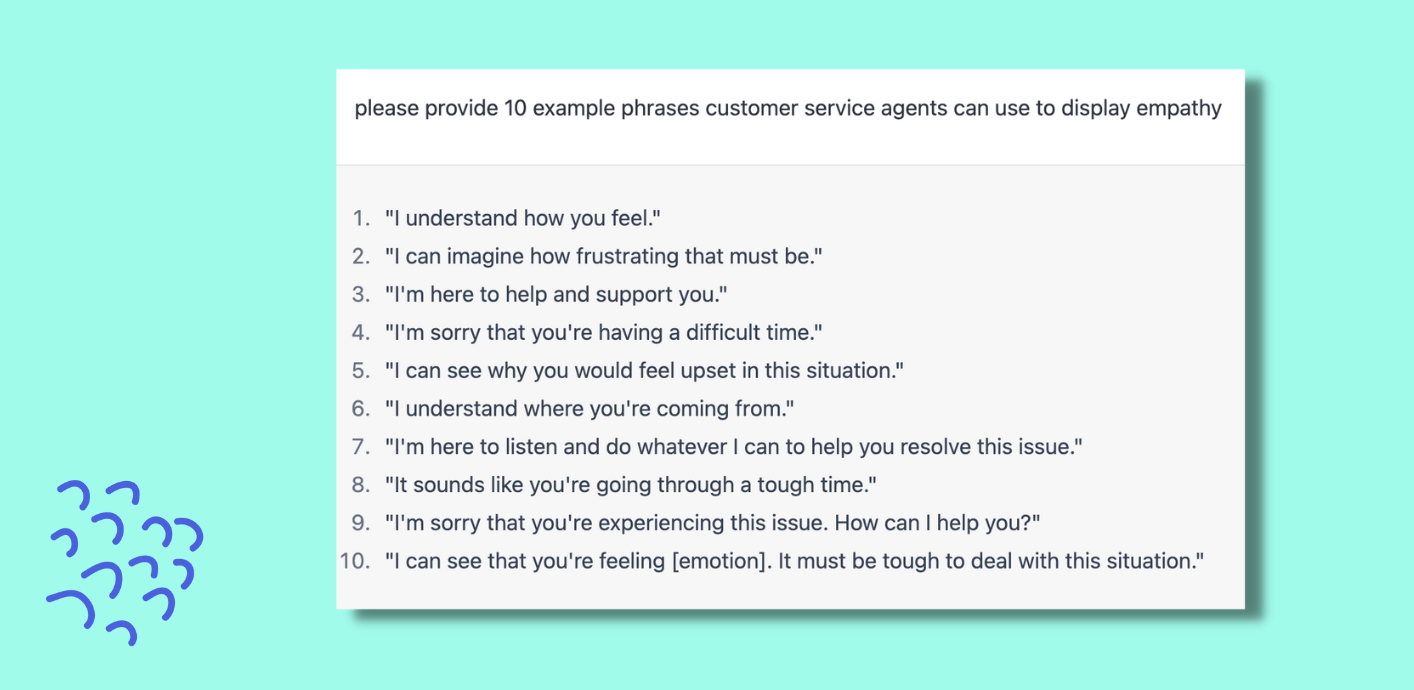
2. Prompts to help you easily use code to automate tasks
Please explain how to send an email from “example@company.com” to “customer@gmail.com” with subject “Cats” and the content “Insert template here” using Python
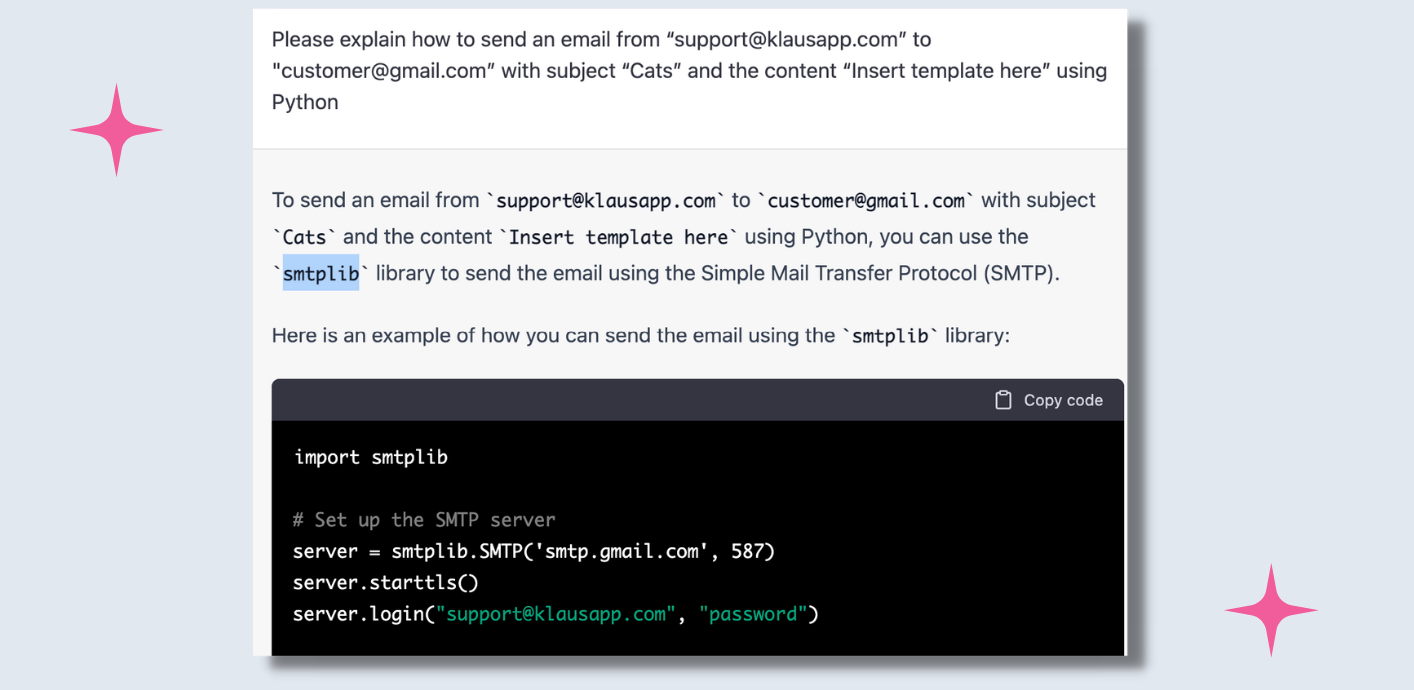
3. Prompt for creating templates to answer common customer queries
Please provide a template to explain standard retail return policy
You can feed any relevant product information and policies into each individual prompt and ask ChatGPT to provide a template for your customer support agents.

4. Prompt to help new agents adapt their tone of voice
Please make this paragraph more friendly:
Some businesses are more colloquial, some more formal, some use lots of cat puns.

5. Prompt to act as a proxy for customer chats to test support agents
Please chat as if you were a customer who cannot login to their account
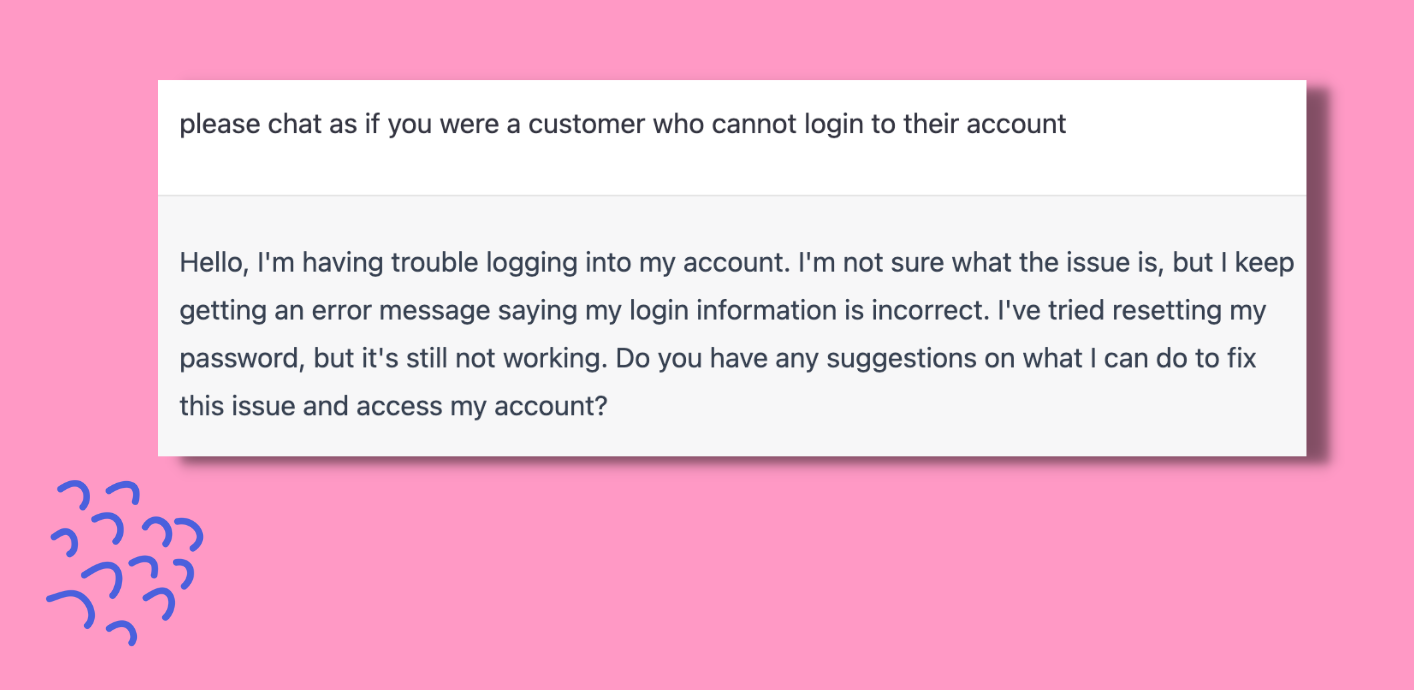
6. Prompt to repurpose knowledge base articles
Please summarize the following knowledge base article into step-by-step instructions:
Reduce the time spent on common customer questions by helping agents make the best use of existing material and focus on more complex queries.

7. Prompt to create knowledge base articles
Please use the following bullet points to create an easy-to-read article
Reduce the time spent on creating a help center database to help customers self-serve.

What’s next for ChatGPT in customer service?
When we look at artificial intelligence as a whole, its functions are to augment, perfect, and accelerate how we work as humans.
In all of the recommended use cases of ChatGPT for customer service, as with almost all AI implementation, there still needs to be a human in the loop – fact checkers, documentation managers, or customer service trainers. And of course customer service agents themselves.
Top-line customer support will, for the foreseeable future, entail human-to-human customer service interactions. Customers still expect that, for their most complex inquiries and customer complaints, there will be a human to talk to somewhere down the support path. So, the customer service industry is not going to change overnight.
The increasing capabilities of machine learning, natural language processing, and language models will likely lead to the development of more advanced and accessible AI tools for businesses of all sizes. As demonstrated by ChatGPT.
Originally published in March 2023; updated in January 2024.
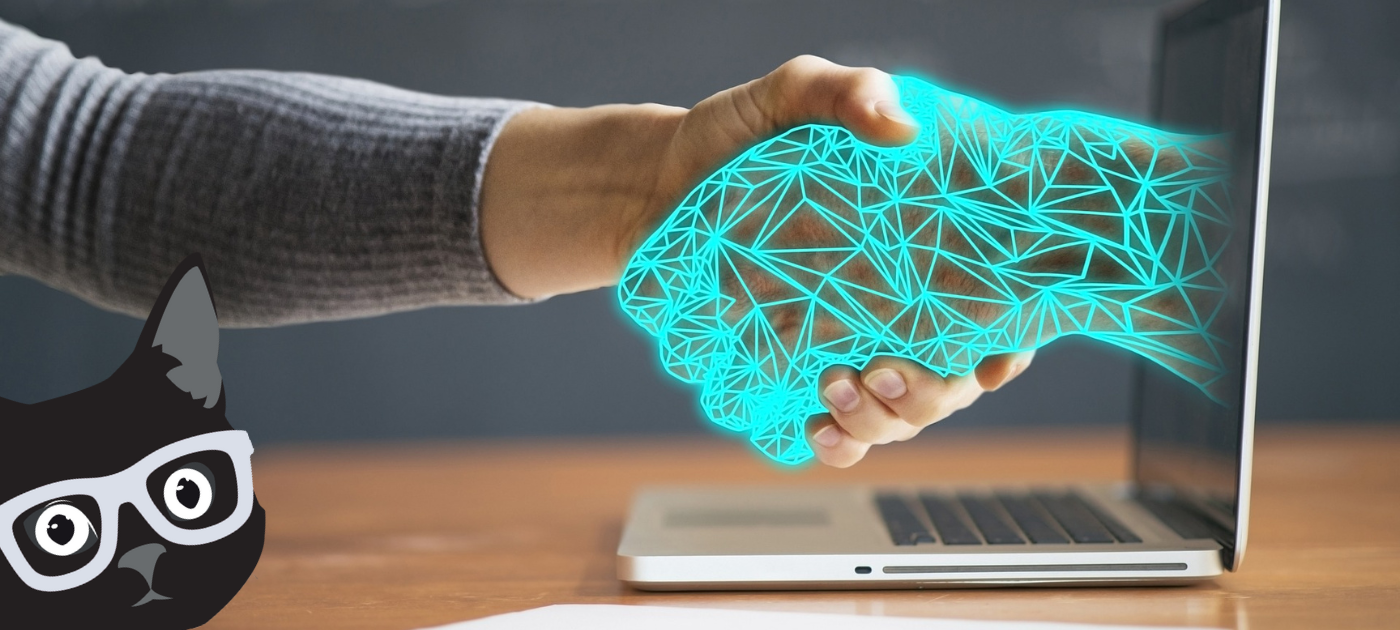
![Download The Future of Conversations [ebook]](https://storage.googleapis.com/static_site_bucket/1000b88a-klaus-gdb00_1b-1413x630-1.png)

![Customer Service Quality Assurance Job Description [Template]](https://storage.googleapis.com/static_site_bucket/2c962bec-customer-service-quality-assurance-job-sescription-600x400.png)